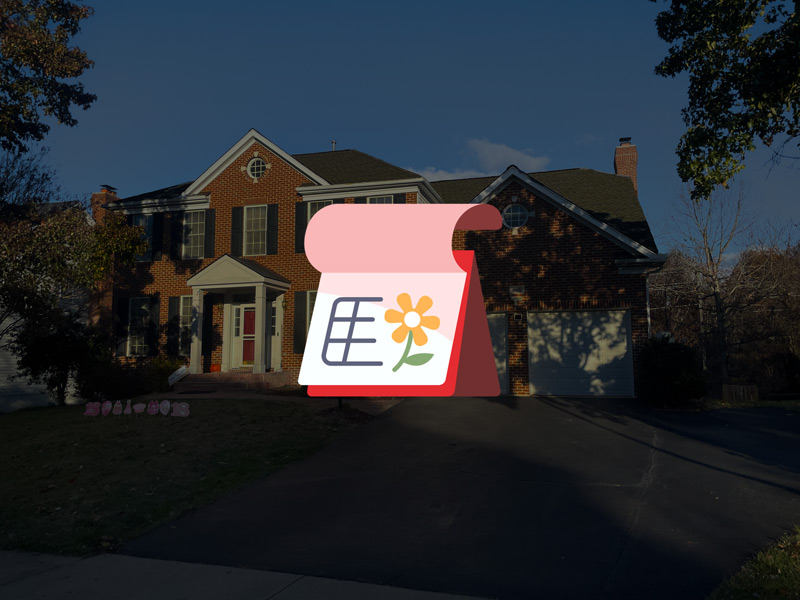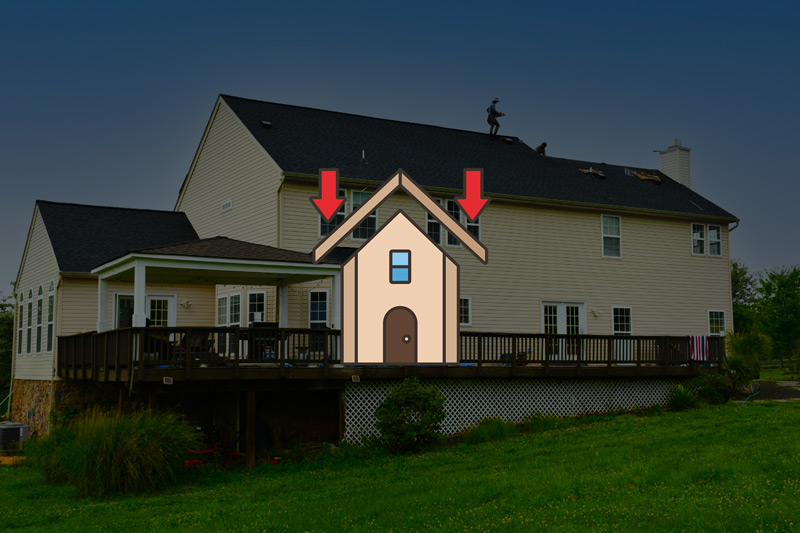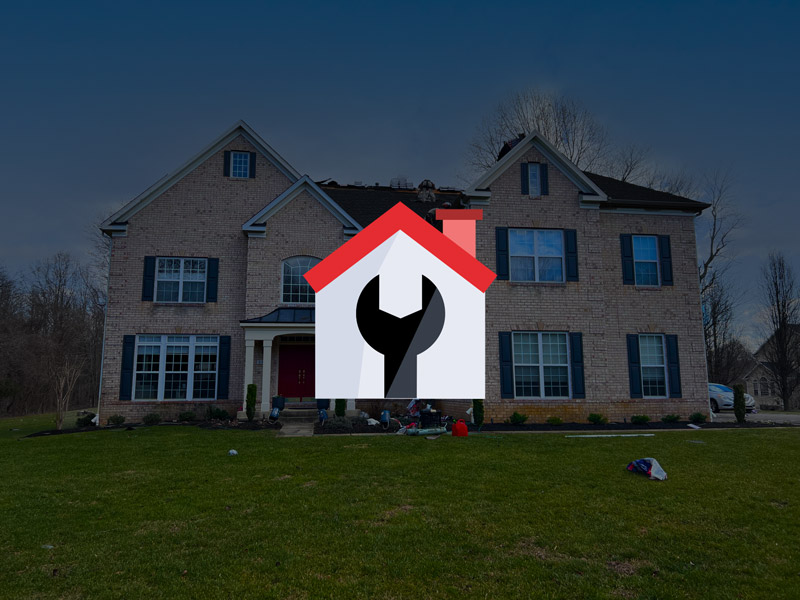Roof Replacement Steps:Guide to a Sturdy and Protected Home
Roof replacement is a crucial undertaking for homeowners that ensures the integrity and protection of their property. When considering a roof replacement, it’s important to understand the significance it holds for the overall well-being of your home. A sturdy and well-maintained roof provides a solid defense against external elements, including rain, snow, wind, and extreme temperatures.

Assessing Roof Conditions
Visual Inspection and Identifying Common Roofing Issues
Before proceeding with a roof replacement, it’s essential to conduct a thorough visual inspection of your roof to identify any existing problems. Look for the following common roofing issues:
- Leaks and Water Damage: Inspect your attic and ceilings for signs of water stains or mold growth. Check for any water penetration around skylights, vents, or chimneys.
- Missing or Damaged Shingles: Look for shingles that are cracked, curled, blistered, or completely missing. These indicate potential vulnerabilities and may require replacement.
- Aging and Wear: Assess the overall condition of your roof. Determine if it shows signs of aging, such as granule loss, significant fading, or deterioration.
- Sagging or Uneven Roof: Check if your roof displays any noticeable sagging or unevenness, as it could indicate underlying structural issues that need immediate attention.
Consulting with Roofing Professionals for a Thorough Assessment
While a visual inspection provides a good starting point, it’s advisable to consult with roofing professionals for a comprehensive assessment. Experienced contractors can identify hidden problems and offer expert insights. They possess the necessary knowledge to evaluate the condition of your roof accurately.
During the consultation, the roofing professional will likely perform the following:
- Roof Measurement: Accurately measure the roof area to determine the scope of the replacement project and calculate the required materials.
- Detailed Roof Analysis: Conduct a close examination of the roof’s components, including the underlayment, flashing, vents, and gutters. They will assess their condition and identify areas that need attention.
Assessment of Structural Integrity: Evaluate the roof’s structural integrity to ensure it can support the weight of new materials and any additional layers, if applicable.
Determining the Need for Roof Replacement
Based on the visual inspection and professional assessment, it’s important to determine whether a roof replacement is necessary. Consider the following factors:
- Extensive Damage: If the roof exhibits widespread damage, such as multiple leaks, severe shingle deterioration, or structural issues, a replacement may be the most practical solution.
- Age of the Roof: Consider the age of your roof. Most asphalt shingle roofs have a lifespan of around 20 to 25 years. If your roof is approaching or exceeding this age, replacement is often recommended.
- Cost of Repairs: Evaluate the cost of repairs compared to the cost of a replacement. If the repair expenses are significant or if the roof requires frequent repairs, a replacement may be a more cost-effective long-term solution.

Planning and Preparation
Selecting the Right Roofing Materials and Styles
Choosing the appropriate roofing materials and styles is a crucial step in the roof replacement process. Consider the following factors when making your selection:
- Material Durability: Assess the durability and longevity of different roofing materials, such as asphalt shingles, metal, tiles, or slate. Ensure the chosen material can withstand your local climate conditions and provide long-term protection.
- Aesthetic Appeal: Explore various roofing styles and colors that complement your home’s architecture and enhance its curb appeal. Opt for a design that blends seamlessly with the overall aesthetic of your neighborhood.
- Maintenance Requirements: Consider the maintenance needs of different roofing materials. Some may require more frequent inspections and repairs, while others offer low-maintenance options.
Obtaining Necessary Permits and Approvals
Before commencing any roof replacement project, it’s essential to obtain the required permits and approvals from local authorities. Follow these steps:
- Research Local Regulations: Familiarize yourself with the specific building codes and regulations related to roof replacements in your area. Each locality may have its own set of requirements.
- Submit Permit Applications: Complete the necessary permit applications and provide the required documentation, such as project details, contractor information, and material specifications. Pay any associated fees.
- Await Approval: Wait for the permits to be approved before starting the roof replacement project. This ensures compliance with local regulations and prevents potential legal issues.
Securing Proper Financing or Budgeting for the Project
Roof replacements can be a significant financial investment. To ensure a smooth process, consider the following financing options and budgeting strategies:
- Research Financing Options: Explore various financing avenues, such as personal loans, home equity loans, or contractor financing programs. Compare interest rates, repayment terms, and eligibility criteria.
- Set a Realistic Budget: Assess your financial capabilities and set a budget for the roof replacement project. Consider the cost of materials, labor, permits, and potential unexpected expenses.
- Obtain Multiple Quotes: Request quotes from reputable roofing contractors to compare prices and services offered. This allows you to make an informed decision based on your budget and desired quality.
Scheduling and Logistics for a Smooth Roof Replacement Process
Proper scheduling and logistical planning are essential to ensure a smooth roof replacement process. Consider the following aspects:
- Contractor Availability: Coordinate with your chosen roofing contractor to determine their availability and schedule the project accordingly.
- Weather Considerations: Check local weather forecasts and select a time of year with favorable weather conditions for the roof replacement. Avoid periods of heavy rainfall, extreme temperatures, or high winds.
- Material Delivery and Waste Removal: Coordinate the delivery of roofing materials to ensure they arrive on time. Plan for proper waste removal and disposal throughout the project.

Roof Removal and Preparation
Safe Removal of Existing Roofing Materials
The first step in a roof replacement project is safely removing the existing roofing materials. This process involves:
- Taking Safety Precautions: Prioritize safety by wearing protective gear, such as gloves, goggles, and sturdy footwear. Use caution when working at heights and ensure proper ladder placement.
- Removing Shingles: Begin by removing the shingles carefully using a roofing shovel or pry bar. Work systematically, starting from the top and moving downward. Dispose of the old shingles responsibly.
- Inspecting for Damage: While removing the old roofing materials, inspect the underlying structure for any signs of damage, such as rot, decay, or weakened areas. Note these concerns for later assessment and repair.
Assessing and Addressing Structural Concerns
During the roof removal process, it’s essential to assess the structural integrity of the underlying roof components. Address any concerns to ensure a stable foundation for the new roof. Consider the following steps:
- Inspecting the Decking: Thoroughly examine the roof decking for any signs of damage, such as rot or water penetration. Replace any compromised sections to ensure a solid base for the new roof.
- Reinforcing Weakened Areas: If structural weaknesses are identified, reinforce them with additional support or framing to ensure the roof’s stability and longevity.
- Consulting a Structural Engineer: In cases of significant structural concerns, it may be advisable to consult a structural engineer for a professional evaluation and guidance.
Evaluating and Enhancing Roof Ventilation
Proper roof ventilation is crucial for maintaining a healthy and efficient roofing system. During the roof replacement process, consider the following aspects of ventilation:
- Inspecting Existing Ventilation: Evaluate the current ventilation system, including ridge vents, soffit vents, and exhaust fans. Ensure they are functioning correctly and free from blockages.
- Assessing Ventilation Needs: Determine if the existing ventilation system is adequate for your specific roof design and local climate. Consider consulting with a roofing professional for expert advice.
- Enhancing Ventilation: If necessary, install additional ventilation components to improve airflow and prevent moisture buildup, which can lead to damage and decreased energy efficiency.
Preparing the Substrate for the New Roof Installation
To ensure a proper installation and long-lasting roof, the substrate must be properly prepared. Follow these steps:
- Clearing Debris: Remove any remaining debris, nails, or protruding objects from the roof surface. Thoroughly clean the substrate to create a smooth and even base.
- Repairing Damaged Areas: Address any identified structural concerns or damaged sections of the roof substrate. Replace or repair them as necessary to provide a solid foundation.
- Installing Underlayment: Apply an appropriate underlayment material, such as roofing felt or synthetic underlayment, to provide an additional layer of protection against moisture and improve overall performance.

Roof Installation Techniques
Installation of Roofing Underlayment and Moisture Barriers
Proper installation of roofing underlayment and moisture barriers is essential for protecting your roof from water damage and ensuring its longevity. Follow these steps:
- Selecting the Underlayment: Choose an appropriate underlayment material based on your climate, such as asphalt-saturated felt or synthetic underlayment. Ensure it meets industry standards for quality and durability.
- Starting at the Eaves: Begin by installing the underlayment at the eaves of the roof, overlapping each row as per the manufacturer’s instructions. Use nails or staples to secure the underlayment, keeping it taut and free from wrinkles.
- Installing Ice and Water Shield: In areas prone to ice dams or heavy rainfall, apply an ice and water shield along the roof’s eaves, valleys, and around roof penetrations. This provides an additional layer of protection against water infiltration.
Selecting and Installing Roofing Shingles or Tiles
Choosing the right roofing shingles or tiles and installing them correctly is vital for the aesthetics and functionality of your roof. Follow these guidelines:
- Material Selection: Select roofing shingles or tiles that suit your climate, budget, and desired aesthetic. Consider factors such as durability, color options, and manufacturer warranties.
- Starting with a Starter Course: Install a starter course of shingles or tiles along the eaves of the roof. This provides a secure base for the subsequent rows and ensures proper water shedding.
- Nailing and Alignment: Follow the manufacturer’s guidelines for nailing patterns and placement. Ensure each shingle or tile is aligned properly and securely fastened to the roof deck.
Properly Flashing Roof Penetrations and Chimneys
Flashing is crucial for preventing water penetration around roof penetrations, such as vents, skylights, and chimneys. Follow these steps:
- Evaluating Flashing Requirements: Assess the type and condition of existing flashing or determine the need for new flashing. Consider using corrosion-resistant materials for enhanced durability.
- Proper Installation: Install flashing around roof penetrations, ensuring it is securely sealed and integrated with the roofing materials. Use appropriate flashing techniques for each specific penetration type.
- Sealing and Caulking: Apply high-quality sealants and caulking to create watertight seals around flashing intersections and penetrations. Regularly inspect and maintain these areas to prevent water leaks.
Implementing Effective Roofing Insulation
Proper insulation contributes to energy efficiency and comfort within your home. Follow these guidelines:
- Assessing Insulation Needs: Evaluate the current insulation levels and consider local building codes and recommended R-values. Determine if additional insulation is required for optimum energy efficiency.
- Selecting Insulation Materials: Choose insulation materials that are suitable for your climate, such as fiberglass batts, spray foam, or rigid foam boards. Consider their thermal resistance properties and environmental impact.
- Proper Installation: Install insulation in the attic and other areas as per the manufacturer’s guidelines. Ensure proper ventilation is maintained to prevent moisture buildup and maintain roof performance.

Final Steps and Post-Installation Considerations
Conducting a Thorough Quality Inspection
Once the roof replacement is complete, it is crucial to conduct a thorough quality inspection to ensure that everything has been installed correctly and meets the desired standards. Here are the key steps:
- Visual Inspection: Carefully examine the newly installed roof, checking for any visible defects, misaligned shingles or tiles, or areas that may require further attention.
- Leak Testing: Perform a water test to verify that the roof is watertight. This involves directing a controlled amount of water onto specific areas of the roof and checking for any signs of leakage inside the building.
Cleaning Up and Disposing of Construction Debris
After the roof replacement project, it is essential to clean up and dispose of any construction debris properly. Follow these steps:
- Debris Removal: Clear the work area of all leftover materials, such as old shingles, packaging, nails, and other debris. Use caution to prevent any damage or injury during the cleanup process.
- Recycling and Disposal: Separate recyclable materials from non-recyclable waste. Dispose of the non-recyclable waste according to local regulations and guidelines. Consider recycling options for materials like asphalt shingles.
Addressing Warranties, Maintenance, and Longevity
To protect your investment and ensure the longevity of your new roof, address the following considerations:
- Manufacturer Warranty: Review the warranty provided by the roofing materials manufacturer. Understand the terms and conditions, including any required maintenance or specific actions that may affect the warranty’s validity.
- Regular Maintenance: Develop a maintenance plan for your new roof, including periodic inspections, gutter cleaning, and addressing any potential issues promptly. Regular maintenance can extend the lifespan of your roof and prevent costly repairs.
Ensuring Proper Roof Care and Regular Inspections
To maintain the integrity and performance of your roof over time, follow these recommendations:
- Maintain Good Roofing Practices: Keep the roof clean from debris, trim overhanging branches, and prevent the accumulation of leaves or other materials that could trap moisture and lead to roof deterioration.
- Regular Inspections: Schedule regular roof inspections by a qualified professional to identify any potential issues early on. Inspections help catch problems like leaks, damaged shingles, or flashing issues before they escalate.
View More Articles
Please Share!










